I've started typing this at 6.30am, shortly before I'm off to buy food for the weekend, so thoughts and prayers would be appreciated. I'm hoping that everyone is keeping safe and warm and well, and that your Christmas crackers are as nice as mine (they are Natural History Museum ones, very pretty indeed). After yesterday's quite epic time with Averil, I'm very much hoping that today will be quieter, but I suspect that this lady artist is going to be an interesting challenge as she was a traveler. Say hello to Margaret Murray Cookesley...
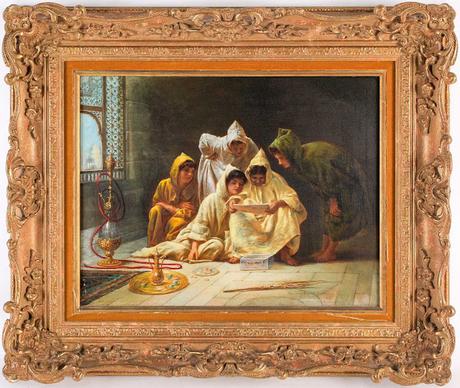
An Interesting Letter (1892)
She began as Margaret Deborah Garland, born in April 1843 to an affluent family in Dorset. Her parents were John Bingley Garland (1792-1875) and Frances 'Fanny' Maria (1815-1886), who married in 1822 in Poole, near Bournemouth. The couple had seven children (in total), and Margaret was the sixth and last daughter. John appears to have been married before in Canada, and remarried in 1840 to Fanny, making her the mother of Margaret's elder sister Frances (1841-1925) and younger brother John Butler Garland (1845-?). John Senior was a merchant and the first Speaker of the House for Newfoundland, with a rather useful Wikipedia page. He was also an artist, creating the Blood Collages. You heard me...
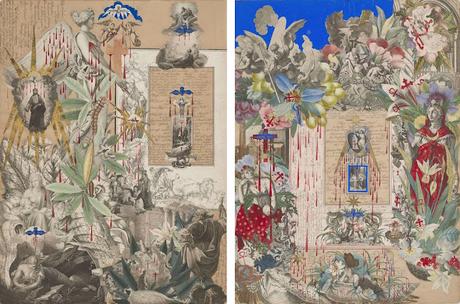
Two of the Blood Collages by John Bingley Garland
I do not have the time to unpick all of this and mercifully there is a page if you fancy a look, flipping nora. Let's move on swiftly...
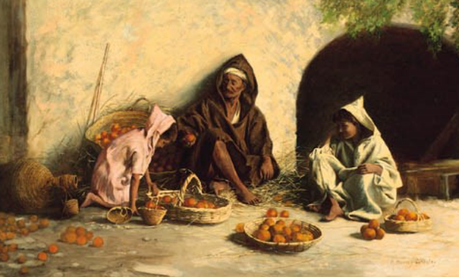
Moroccan Orange Sellers (undated)
Margaret trained in Belgium under Louis Gallait and then returned for a year to South Kensington to study anatomy. Similar to Averil Burleigh, it seems that no sooner than Margaret had finished her training, she married. Her husband was Edward Murray Cookesley (1837-1916), an officer under Brigadier General Franks at the Indian Mutiny and the Siege of Lucknow. The couple married at Wimbourne Minster in April of 1866 and Edward sold his commission in 1870, retiring from the army. Interestingly, Margaret's sister Frances also married a soldier, Henry Hoste Swinny in 1870 and he retired his commission at the same time as Edward.
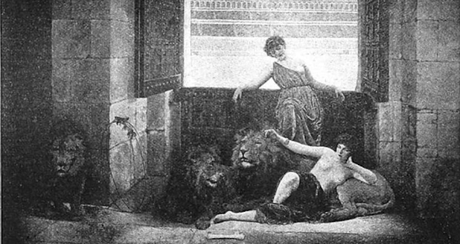
The Lion Tamers (1898)
For reasons I will come to when we reach 1894, I know that from 1870-78, Edward had no occupation. I know that Margaret traveled to the Holy Lands, to Egypt and countries to the East where she painted scenes of life and leisure for which she would become famous. I think the first mention I can find for her in the newspaper is in 1883 in Truth, where she appears in a review of the Ladies Amateur Art Society with her picture Drifting Home. Another reason to believe she had traveled prior to this is that she also exhibited Egyptian Seis and Mohamitan Priests Entering a Mosque at the same exhibition.
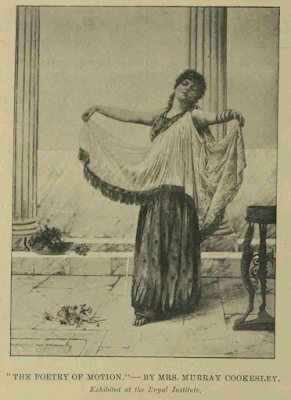
In 1888 she showed Gordon's Friends: Women of the Upper Nile and An Eastern Doorway. She also showed A Barber Shop at Tangiers at McLean's Gallery, another scene from her journeys in North Africa and the Middle East. That is definitely where her heart was, as there is no doubt she traveled but there are no images of America or Europe, only her wholehearted embrace of Orientalism. The Burnley Express commented that Mrs Murray Cookesley 'is advancing by leaps and bounds.' The Morning Post in 1888 also reported that Margaret had left town for Morocco with the purpose of making sketches of 'Oriental life.' As the Illustrated Sporting and Dramatic News reported in 1890, when reviewing the Nineteenth Century Art Society's Summer exhibition 'the Eastern subjects of M. Murray Cookesley are as worthy of adoration as anything in the exhibition.'

The Little Mogul (1892)
I was astonished by how quickly Margaret's reputation grew and I think no small part of that is Margaret's active pursuit of her subjects and capturing what she imagined the Eastern life was. I wondered if her 1891 RA painting Three Little Wags was a play on Three Little Maids (I can't stop making that comparison, I do apologise), but in 1893 she got to make a trip that would seal her reputation forever. She was commissioned by the Sultan of Constantinople to paint his son. He apparently handed her a photograph of the boy saying that would be sufficient, but Margaret insisted that she needed to sketch from life and so managed to fit in a couple of carriage journeys with him in order to get enough of a sketch to make the portrait. The Sultan was so impressed with the resultant piece that he gave her the Order of the Chefakat and the Sultan requested that Margaret stay and paint his wives but she didn't have enough time.
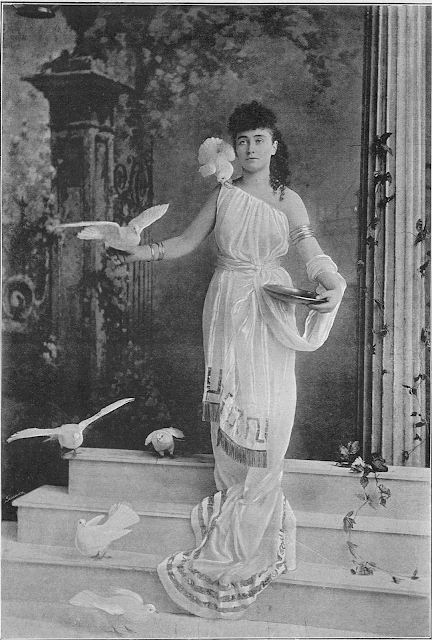
A Tableaux for the Crystal Palace
While doing the research for this I was puzzled by the sudden change in her activities in the mid 1890s. She went from being all about her fine art and travel to tableaux vivant and novelty, which seemed an odd choice to make. I'm not judging anyone for being popularist and it certainly seems that when the directors of the Constantinople experience at Olympia were after an artistic director, Margaret's art made her an obvious choice. The Echo reported that 'judging from the dress rehearsal of "The Orient" at Olympia yesterday, everything, even the minutest detail is in working order for the opening ... ladies of the harem are posed in graceful attitudes clothed in gorgeous costumes. Mrs Murray Cookesley has also designed the Temple of Venus.' In addition to this, she created living pictures at the Crystal Palace, recreating different scenes from art and history in tableaux vivant which included Titania and Oberon, Cleopatra, a Guardian Angel watching a sick child and a popular picture of the time Art Attracts the Heart. All this at a place called the Palace of Perpetual Pleasure.
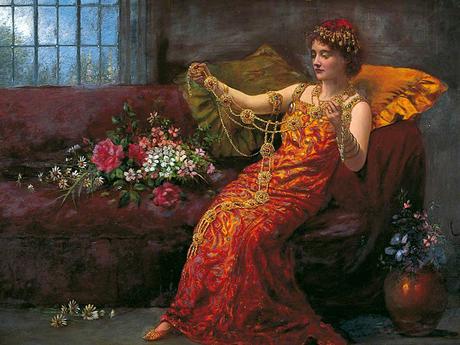
'Rich and rare were the gems she wore' (undated)
Now, all this seemed odd until I read a separate news article from 1894 about Edward Murray Cookesley's bankruptcy. He had accrued losses and liabilities that were in excess of an equivalent of over £200K in today's money and his movements and mistakes over the previous decade were written in the newspapers. I'm guessing that Margaret took any and all work she could get and that Palaces of Perpetual Pleasures paid well. It also might be the reason they move quite a bit before settling in 1898 at Cromwell Place. In the meantime, Margaret exhibited more Arabic scenes including Umbrellas to Mend: Damascus in 1894, An Arab Cafe, Cairo in 1895 and Death of the First Born in 1896. Edward also invented tinned soup at this time, which was amazing - don't get excited, it wasn't like cream of tomato, he just found a way of placing a powdered soup into a cartridge which could be combined with water and boiled, making a soup that was 'more than merely palatable' according to the Echo in April 1896. Yummy.
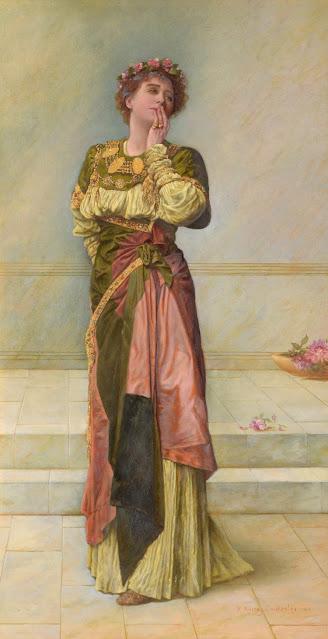
Ellen Terry as Imogen (1898)
Possibly the most surprising move is 1898 portrait of Ellen Terry as Shakespearean heroine Imogen, which is not only really good but is also not a street scene in the Middle East. She also received a third prize for her picture The Gambler's Wife at the 10th annual drawing of the Crystal Palace Art Union.
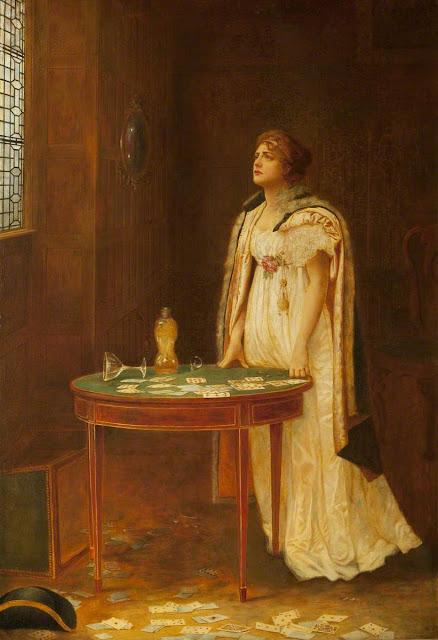
The Gambler's Wife (1898)
I wonder if her husband's financial troubles were common knowledge, as she released a statement reported in the newspapers in 1899 that she and Edward were not leaving Cromwell Place. She had purchased the house and studio from the estate of John Everett Millais (as it belonged to him before his death) and I think it is interesting (or maybe I am reading too much into it) that the newspaper report says that she had bought the house and studio.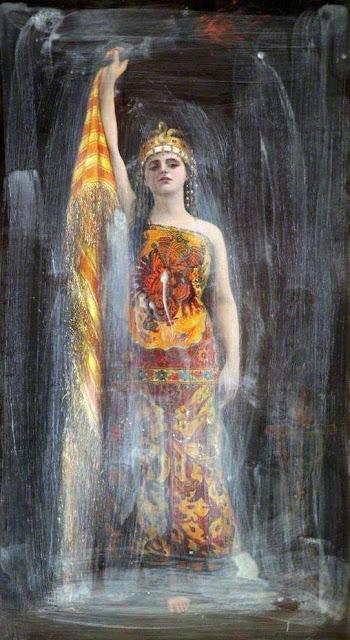
Astarte (1903)
Her RA appearances continued and in 1903, she was commission to paint Astarte for George Royle who lived in Cairo. This is a very interesting painting as I have also seen it referred to as A Priestess of Isis and Cleopatra but Astarte is the title published underneath it in the Queen magazine accompanying the article on the commission.
A detail which I absolutely loved when I read it is that when Margaret was preparing to submit her paintings into the RA she would hold a 'picture tea' for her friends. This was reported in the Northern Whig in March of 1904 when her friends had visited for tea in order to see her new works. She also became the chair of the Society of Lady Artists, who held an event at the Grand Hotel in London in 1905 for the Lord Mayor of Liverpool, John Lea. Lea had been a friend to artists for many years, extending great hospitality to them for the Autumn exhibition in Liverpool and it was arranged that a reciprocal event should be held in London but the male artists excluded the women from the event so they held their own. Margaret even wore her medal from the Sultan.
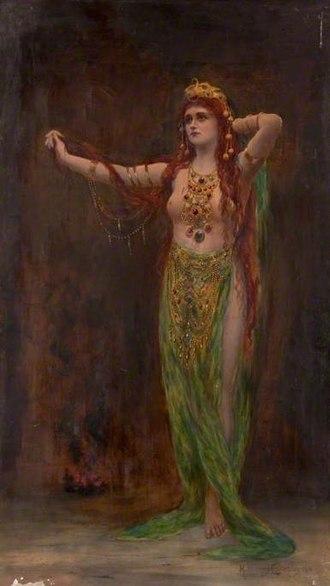
Circe Resplendens (1913)
I'm not sure exactly when Margaret and Edward took a place in Bath but I'm guessing it was before the Great War as Edward was part of the Bath Anti-German Union. She kept the house in Cromwell Place as she continued to submit works to the RA from there, showing The Escape and Joyous Youth in 1907, In Captivity in 1908 and Circe Resplendens in 1911. I really wish I had an image of her 1912 RA work The Latest Bit of Gossip, but sadly not to be found as it was obviously beyond the RA illustrated catalog to have any of her work.
Edward died in 1916 and he received a reverent mention in the local press, including his service at Lucknow and the Mutiny. Margaret remained part of Bath's social life, exhibiting with the RA while also manning a stall at a local sale of work for St Michael's missionary work. Her last work at the Royal Academy was Entrance to the Old Mosque at Damascus, a fitting end to a life enchanted by the beauty of the Middle East.
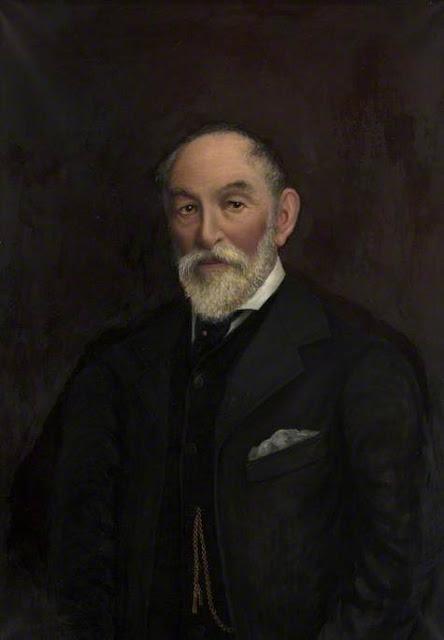
Frederick Harrison (undated)
The Bath Chronicle ran a full obituary for her when Margaret died on 8th February 1927. It talked about how she loved to travel, what a good musician she was and how she was best known locally as a portrait painter which would have surprised her critics. The piece ends with fond sentiments about her love of her work and others 'Her generosity towards deserving causes, a generosity of time and labor as well as substance, will never be forgotten.'
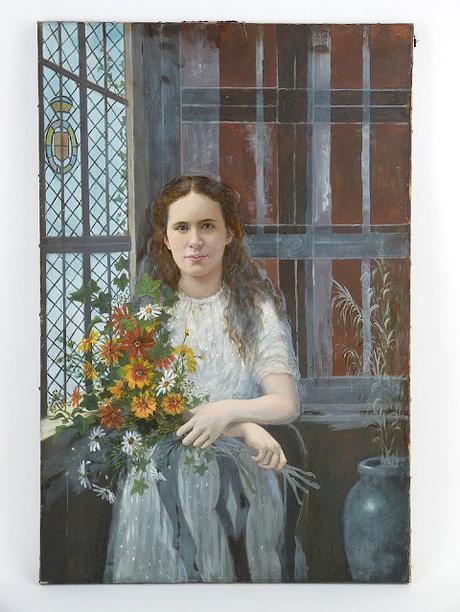
Portrait of a Girl (undated)
I'm not entirely sure how we forgot her art, but hopefully her works, and not just her pieces from the Middle East, will be remembered, as well as a woman who was not afraid to paint from life and travel for her art. Orientalism is such a loaded and problematic subject matter now, any artistic merit naturally tinged with Empire, but it would be good, as the Bath Chronicle did, to look at Margaret's art as more than just Eastern images, and her work as a portraitist should not be ignored. The portrait of the girl above reminded me of modern works such as pictures by Annie Ovenden and if you had told me that it was from the 1970s, I would have believed you. However, it also reminds me of Millais' early portraits, and I would love to see more of her work like this because it is beautiful. Possibly the secret to Margaret's revival lies in her portraiture, so we should start hunting for more.

